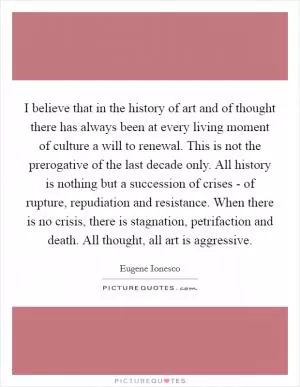To become conscious of what is horrifying and to laugh at it is to become master of that which is horrifying

To become conscious of what is horrifying and to laugh at it is to become master of that which is horrifying
Eugene Ionesco, a prominent figure in the Theatre of the Absurd movement, often explored themes of the absurdity and horror of human existence in his plays. One of his most famous works, "Rhinoceros," delves into the idea of conformity and the loss of individuality in the face of a terrifying and irrational force. In this context, the quote "To become conscious of what is horrifying and to laugh at it is to become master of that which is horrifying" takes on a profound meaning.In "Rhinoceros," the townspeople gradually transform into rhinoceroses, symbolizing the dehumanizing effects of conformity and the loss of individuality. The protagonist, Berenger, is one of the few who resists this transformation and remains human. As he witnesses his friends and neighbors succumb to the allure of becoming a rhinoceros, he is faced with the horrifying reality of losing his identity and humanity.
By becoming conscious of the horror of conformity and the loss of individuality, Berenger is able to resist the temptation to join the herd. He laughs in the face of this absurd and terrifying situation, refusing to succumb to the pressure to conform. In doing so, he becomes the master of that which is horrifying – he retains his humanity and individuality in the face of overwhelming odds.
Ionesco's exploration of the absurdity and horror of human existence in "Rhinoceros" reflects his belief in the power of laughter and defiance in the face of adversity. By laughing at the absurdity of conformity and the loss of individuality, Berenger is able to assert his mastery over the horrifying forces that threaten to engulf him.












 Friendship Quotes
Friendship Quotes Love Quotes
Love Quotes Life Quotes
Life Quotes Funny Quotes
Funny Quotes Motivational Quotes
Motivational Quotes Inspirational Quotes
Inspirational Quotes